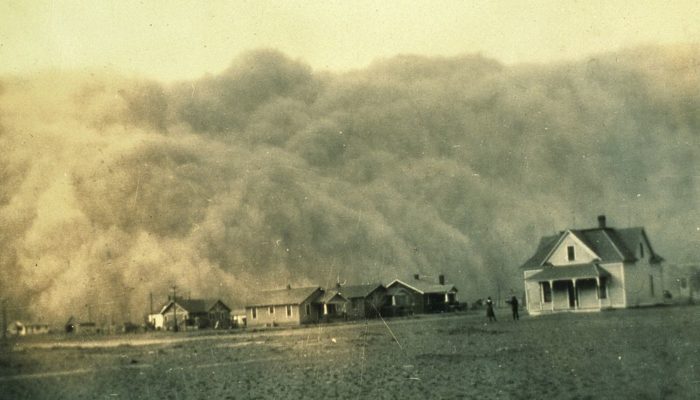
 In today’s interview, we have the pleasure to meet Dr Slobodan Nickovic, who won the prestigious 2022 Plinius Medal.
In today’s interview, we have the pleasure to meet Dr Slobodan Nickovic, who won the prestigious 2022 Plinius Medal.
Slobodan is a research consultant at the Republic Hydrometeorological Service of Serbia, and at the Institute of Physics in Belgrade, Serbia. Throughout his career, he worked for national and international educational, scientific, and operational institutions including the Universities of Belgrade, Athens and Malta, and the World Meteorological Organisation (WMO).
Slobodan has dedicated a great part of his life to improving our knowledge of mineral dust cycles carrying pioneering scientific work on predicting atmospheric sand and dust storms. Nickovic has developed the first operational prognostic dust regional atmospheric model, DREAM, which by 2006 had been implemented operationally in Serbia, Greece, Tunisia and Malta.
Dear Slobodan, you have been awarded the 2022 Plinius Medal for your pioneering work on modelling sand and dust storms, and for significant contributions to the development of a global dust advisory and warning system. First of all: congratulations!
Many thanks, Gabriele. I am very honoured to receive this award.
Would you tell us what has inspired you to undertake this research?
Prior to the 1990s, my research solely focused on numerical weather prediction. The atmospheric and dust processes were completely out of my scientific scope. My interest in dust modelling came almost accidentally. I was collaborating at that time with a group of Turkish oceanographers, and they had frequent recordings of mineral dust originating from their marine observational station. So, I had access to dust observations, I had an atmospheric model, and I had some free time at my disposal. It was quite natural to combine these three ingredients and compute backward dust trajectories. This simple trajectory approach used only the wind to drive the transport of dust and was sufficient to roughly indicate that the dust was coming from the Middle East. It also showed some serious limitations – the calculation was not able to provide additional details about the overall atmospheric dust process.
‘’Long term exposure to high dust concentration can cause premature deaths from cardiovascular disorders and lung cancer, especially in dusty areas like North Africa’’
The outcomes of this little experiment motivated me to think deeper about the problem of dust transportation, as well as to formulate a more sophisticated concept – a new prognostic equation for dust concentration that I fully embedded into a numerical weather prediction system. In this concept, the dust atmospheric life cycle (Figure 1) should include all relevant phases present in nature: (i) starting with the emissions from bare lands, including both vertical and horizontal transport and turbulent mixing, and (ii) ending with the dust deposition to the Earth surface. This was an exciting and challenging idea. It inspired me, completely changed the course of my career, and guided me to develop the Dust Regional Atmospheric Model (DREAM); this is how DREAM came true.
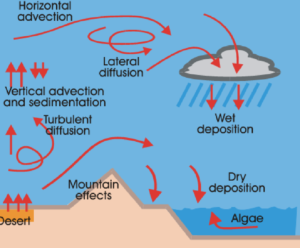
Figure 1. Atmospheric dust life cycle. Credit Slobodan Nickovic).
What are the main adverse impacts of dust?
Mineral dust is one of the most abundant aerosols in the atmosphere and can have numerous negative effects on weather, climate, environment, and society (Figures 2 and 3). Let me illustrate some disastrous effects of dust with two examples from health and aviation.
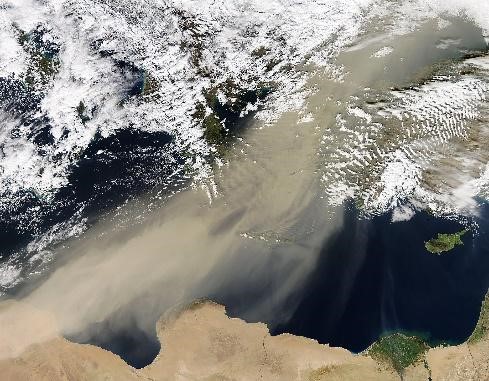
Figure 2. An intense dust storm over the Eastern Mediterranean was observed by MODIS satellite in early February 2015. Credit NASA, https://earthobservatory.nasa.gov/images/85218/saharan-dust-over-the-mediterranean-sea
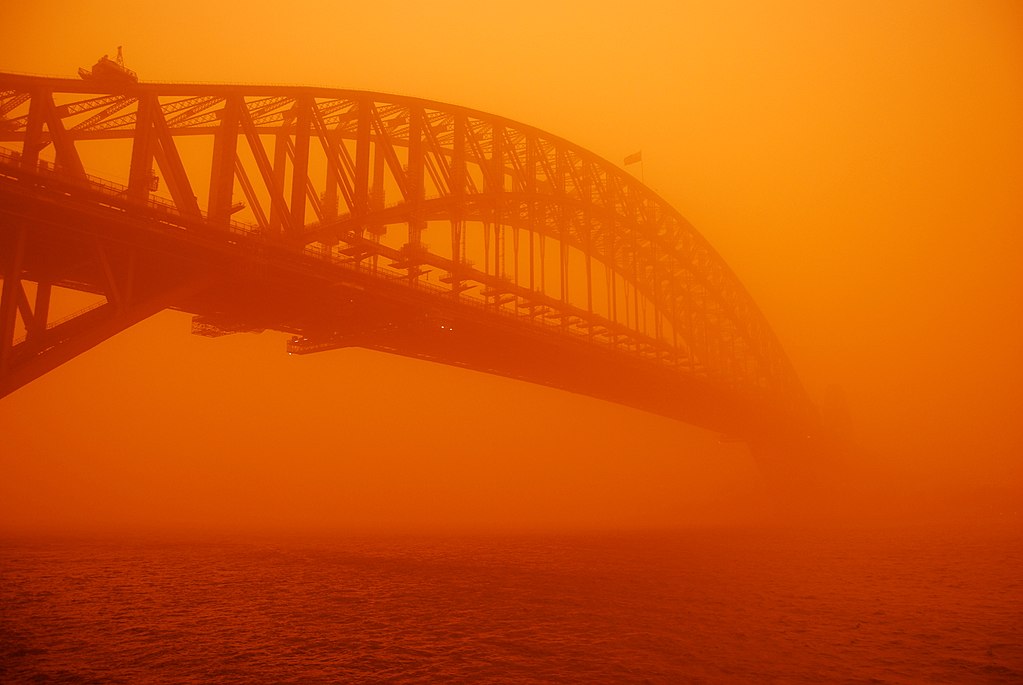
Figure 3. Sydney Harbour Bridge during a red dust storm. Credit John Byrne, CC BY-SA 4.0 via Wikimedia Commons
The effect of dust on health depends on the location where people live. In places close to the deserts, dust storms can have an immediate negative impact on human health. Large amounts of tiny dust particles can reach people’s lungs, causing severe asthmatic reactions. Furthermore, long-term exposure to a high concentration of dust can cause premature death from cardiovascular disorders and lung cancer, especially in dusty areas like North Africa [1]. Meningitis is another example of a disease associated with the dusty season in Sub-Saharan Africa. At least 1.2 million cases of bacterial meningitis are estimated to occur every year having high mortality rates [2]. It is thought that dust particles cause physical damage to lung tissue, allowing bacteria to enter the bloodstream more easily [8]. Finally, dust is also believed to play a role in Valley fever, a sickness produced by inhaling soil-dwelling fungi that is common in deserted areas on the American continent.
Then there is aviation, which is one of the industries that are particularly vulnerable to mineral dust. Its vulnerability comes from the fact that aviation transportation relies so heavily on timely flight operations, and airport activities near dust sources are frequently disrupted by reduced horizontal visibility. During a single dust storm, even little delays result in significant economic losses reaching millions of dollars [10, submitted]. Another concern of the aviation industry is the occasional occurrence of short-term engine power loss caused by microscopic ice crystals in cold clouds [3]. Over 150 such cases have been documented over the last 20 years. Luckily, the majority of these events did not lead to serious accidents. Could dust enhance the icing process in such cases? Indeed, dust particles are known to be among the most efficient ice nuclei [3]. Our team recently investigated the atmospheric environment for two catastrophic aircraft crashes (the 2009 Air France AF477 flight and the 2014 Air Algérie AH5017 flight) in which icing conditions were officially cited as the most likely cause of fatalities. DREAM experiments with dust-induced ice nucleation (Figure 4) indicated a sharp rise of ice particles at the approximate locations and times of accidents where and when desert dust was transported up by convective circulation [4].
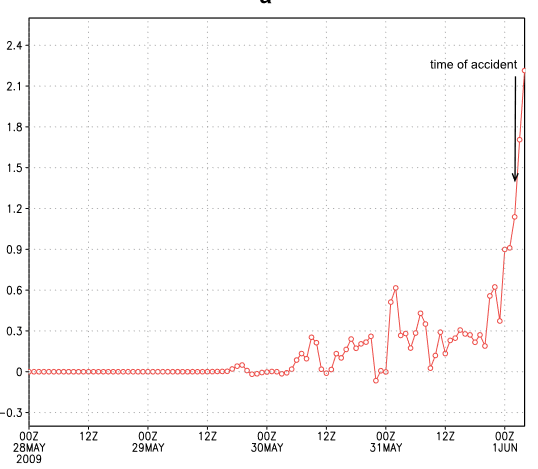
Figure 4. Time evolution icing intensity caused by dust at the AF477 flight levels. The black arrow indicates the accident time [5].
Today, we have at our disposal powerful predictive models that are able to forecast dust storms sufficiently in advance and with considerable accuracy, thus enabling sophisticated mitigation and response measures. Following the high societal interest in dust processes, in 2007, WMO established the Sand and Dust Storm Warning Advisory and Assessment System (SDS-WAS, https://community.wmo.int/activity-areas/gaw-sand-and-dust-storm-warning-advisory-and-assessment-system-sds-was), which provides daily dust forecasts for many different regions. For example, there are up to 15 different models that provide daily dust predictions over the Mediterranean region. In Figure 5, an example of a DREAM dust load predicted for a dust event in March 2022, which affected several European countries, is shown. In Figure 6, an example of the WMO dust forecast for Burkina Faso is presented as a colour-coded map to represent one out of four levels of warning advisory.
Let me go back to the aircraft accidents and illustrate how dust models could be used to reduce risks in aviation. A successful and timely prediction of icing conditions caused by dust could be used as a warning tool for aviation operators and allow them to react and re-route the place. Routine atmospheric-dust forecasting could help to identify flight segments with dangerous icing caused by mineral dust.
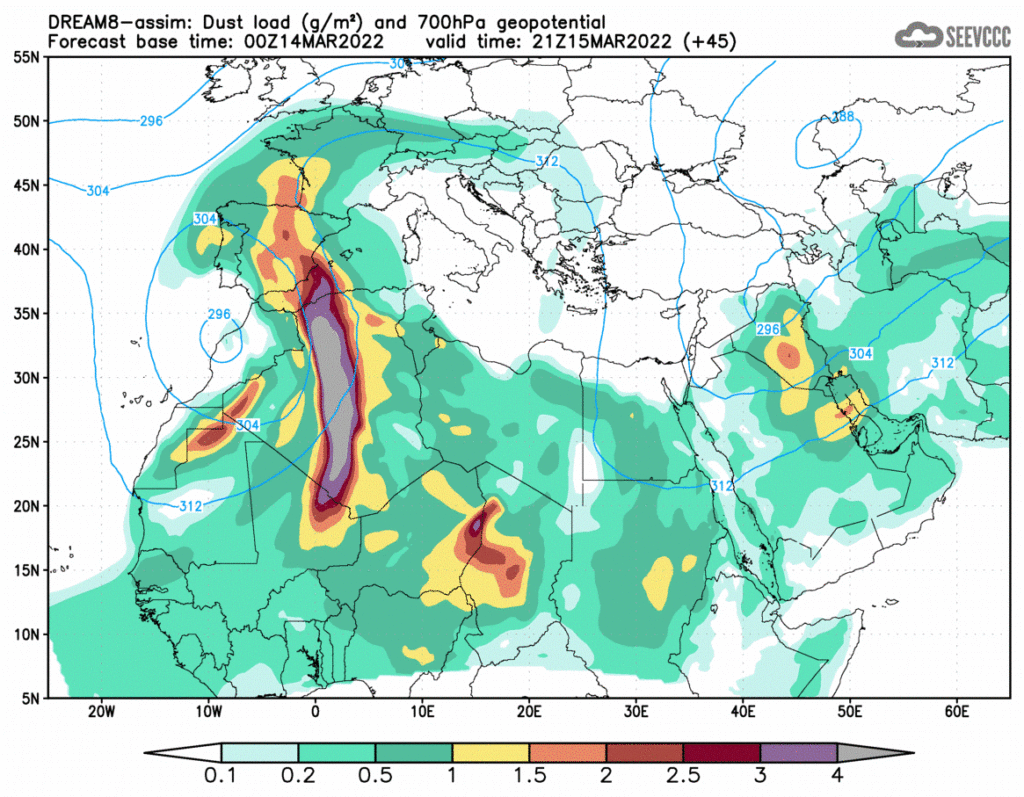
Figure 5: Example of a daily dust forecast. Credit http://www.seevccc.rs/?p=8.

Figure 6: Dust warning system for Burkina Faso. Credit WMO https://public.wmo.int/en/our-mandate/focus-areas/environment/SDS/warning-advisory-system-airborne-dust-burkina-faso-africa
Your work is largely appreciated not only for the scientific contribution it provides but also because it contributed to implementing operational dust warning systems in various regions around the world.
I hope my work in establishing the first regional dust prognostic system was an instructive example for a number of colleagues to follow a similar methodology and apply it to different regions. In the early days, DREAM itself was used for research and operations in several places – in Malta, Greece, Spain, Israel, Egypt, Serbia, Turkey, the USA, and Montenegro.
How does the international community deal with challenges in the field of dust storms hazard and risk management in order to support policy and decision-makers?
Sand and dust storms became a serious global concern in recent decades because of their significant impacts on the environment, health, agriculture, livelihoods, and socio-economic sectors such as energy and aviation. Sand and dust storms are also caused in part by human-induced activities and their adverse impacts affect various regions of the world. I am currently involved in several ongoing international initiatives, which aim at assessing the risks of sand and dust storms for different socioeconomic sectors. In response to these impacts, in 2019, the United Nations (UN) launched the UN Coalition on Combating Sand and Dust Storms. This new entity has the mandate to coordinate the response to sand and dust storms and to enhance societal preparedness in critical regions. The Coalition is composed of 16 UN organisations; just to mention some of them – WMO, WHO, FAO, UNEP, UNDP. A good example of coordination is the collaboration of the WMO Sand and Dust Storm Warning Advisory and Assessment System (SDS-WAS) and the Economic and Social Commission for Asia and the Pacific (ESCAP) to produce risk maps by combining sand and dust storms exposure data and information on population, economic resources, including both, short- and long-term risks for a considered sector. The example in Figure 7 shows the geographic distribution of the health risk related to sand and dust storms.
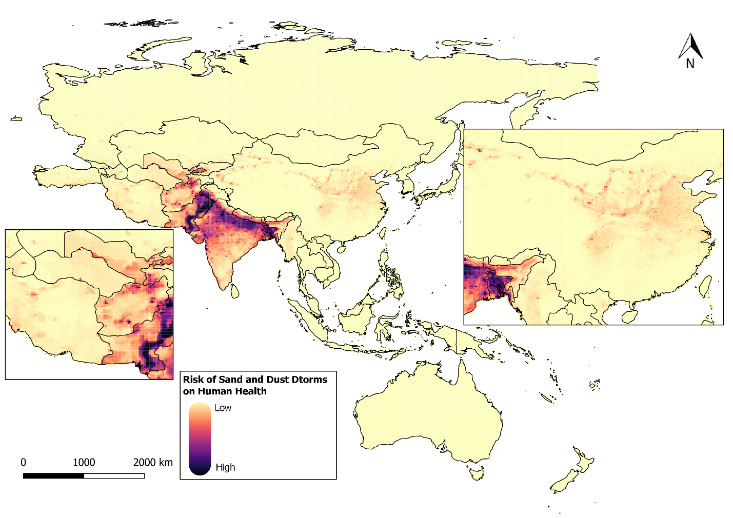
Figure 7. Risk on human health in Asia and Pacific – annual [9]
The number of dust-related published research articles had exponential growth over the last 20 years [6]. I would like to happily observe that the research on dust has become truly interdisciplinary since the time that I got interested in it. I never dreamt that I would collaborate with and learn so much about various facets of dust from chemists, oceanographers, soil scientists and environmentalists, to name just a few. This breadth of involved disciplines brings many different perspectives to dust research, providing an endless source of open problems that could be attractive for an early career scientist. I would like to mention just a few that are dear to my heart:
- There is a continuous trend in increasing the resolution of dust models, aiming to better represent smaller-scale dust storms such as haboobs. The source of these storms is often abandoned agricultural fields, sometimes badly affecting densely populated cities such as Tehran (Iran) and Phoenix (USA) or disrupting ground transport [7]. To identify them in numerical models, a new generation of visible and near-infrared reflectance for vegetation/land cover combined with local soil data should be used. Specialists in satellite and soil science fields are necessary for this component of research.
- Dust deposition over glaciers and snow increase the surface darkness and accelerate cryospheric melting in high latitudes [11]. The research in this field is still in the beginning and it will require scientists with different backgrounds to be included: climatologists, modellers, observational researchers, and physicists.
- Mineralogy of the emitted dust is among the `hot` research topics as well. The mentioned ice nucleation and cold cloud formation critically depend on the dust mineral composition. In addition, soluble iron oxide in dust deposited in the sea is the major nutrient for phytoplankton, which growth has an impact on climate and on coral reefs’ health. Scientists to study these impacts would come from fields such as climatology, mineralogy, and oceanography, just to mention some of them.
I believe the listed research themes are sufficiently attractive to motivate some early career scientists to join our dust-related community.
REFERENCES
- Giannadaki, D., Pozzer, A., & Lelieveld, J. (2014). Modeled global effects of airborne desert dust on air quality and premature mortality. Atmospheric Chemistry and Physics, 14(2), 957-968. https://doi.org/10.5194/acp-14-957-2014.
- Verma, R., & Khanna, P. (2012). Meningococcal vaccine: a new vaccine to combat meningococcal disease in India. Human Vaccines & Immunotherapeutics, 8(12), 1904-1906. https://doi.org/10.4161/hv.21666
- Cziczo, D. J., et al. (2013). Clarifying the dominant sources and mechanisms of cirrus cloud formation. Science, 340(6138), 1320-1324. https://doi.org/10.1126/science.1234145
- Haggerty, J., et al. (2019). Detecting clouds associated with jet engine ice crystal icing. Bulletin of the American Meteorological Society, 100(1), 31-40. https://doi.org/10.1175/BAMS-D-17-0252.1
- Nickovic, S., Cvetkovic, B., Petković, S., Amiridis, V., Pejanović, G., Solomos, S., … & Nikolic, J. (2021). Cloud icing by mineral dust and impacts to aviation safety. Scientific reports, 11(1), 1-9. https://doi.org/10.1038/s41598-021-85566-y
- Knippertz, P., & Stuut, J. B. W. (2014). Mineral dust. Mineral dust—A key player in the Earth system, 121-147. DOI 10.1007/978-94-017-8978-3__1
- Tong, D. Q., et al. (2021). Health and Safety Effects of Airborne Soil Dust in the Americas and Beyond. Reviews of Geophysics. https://doi.org/10.1002/essoar.10508890.1
- Thomson, M. C., Jeanne, I., & Djingarey, M. (2009, March). Dust and epidemic meningitis in the Sahel: a public health and operational research perspective. In IOP conference series: Earth and environmental science (Vol. 7, No. 1, p. 012017). IOP Publishing.
- APDIM, The Asian and Pacific Centre for the Development of Disaster Information Management (2021). Sand and Dust Storms Risk Assessment in Asia and the Pacific, Tehran. https://apdim.unescap.org/knowledge-hub/sand-and-dust-storms-risk-assessment-asia-and-pacific
- Monteiro et al, 2022: Multi-sectoral impact assessment of an extreme African dust episode in the eastern Mediterranean in March 2018, Science of the Total Environment (submitted)
- Pörtner, H. O., Roberts, D. C., Masson-Delmotte, V., Zhai, P., Tignor, M., Poloczanska, E., & Weyer, N. M. (2019). The ocean and cryosphere in a changing climate. IPCC Special Report on the Ocean and Cryosphere in a Changing Climate.
(Post edited by Joana Parente, Valeria Cigala and Paulo Hader)
